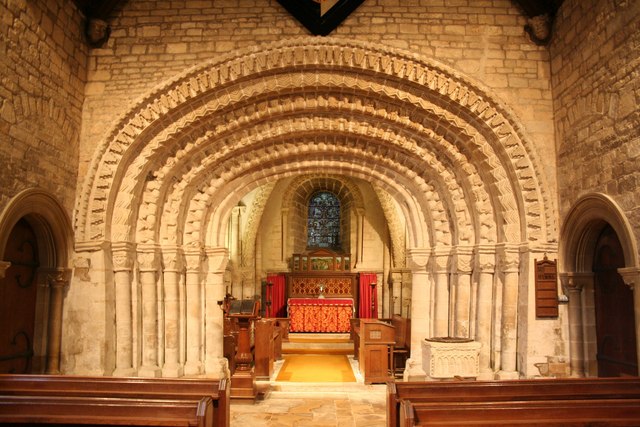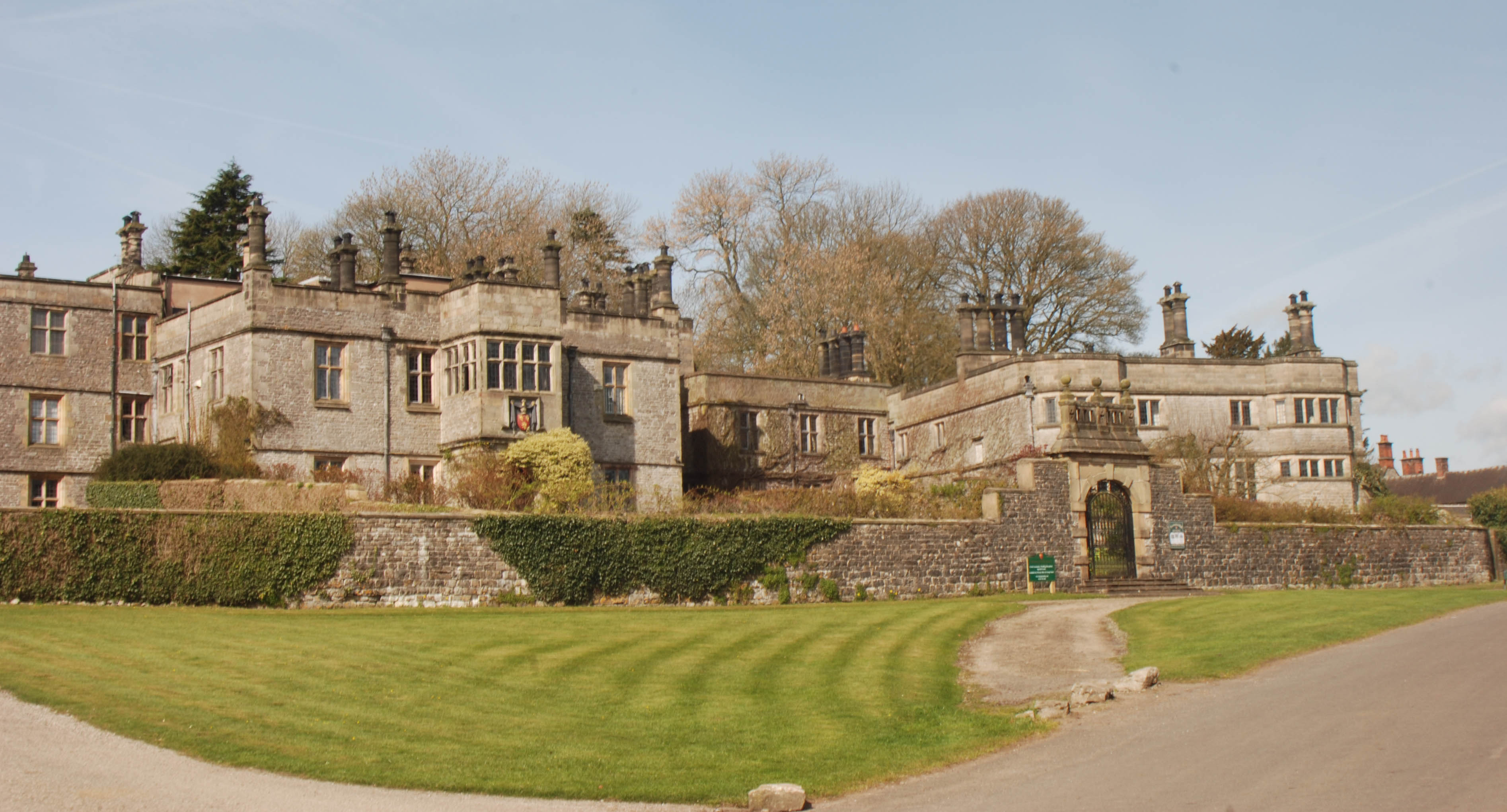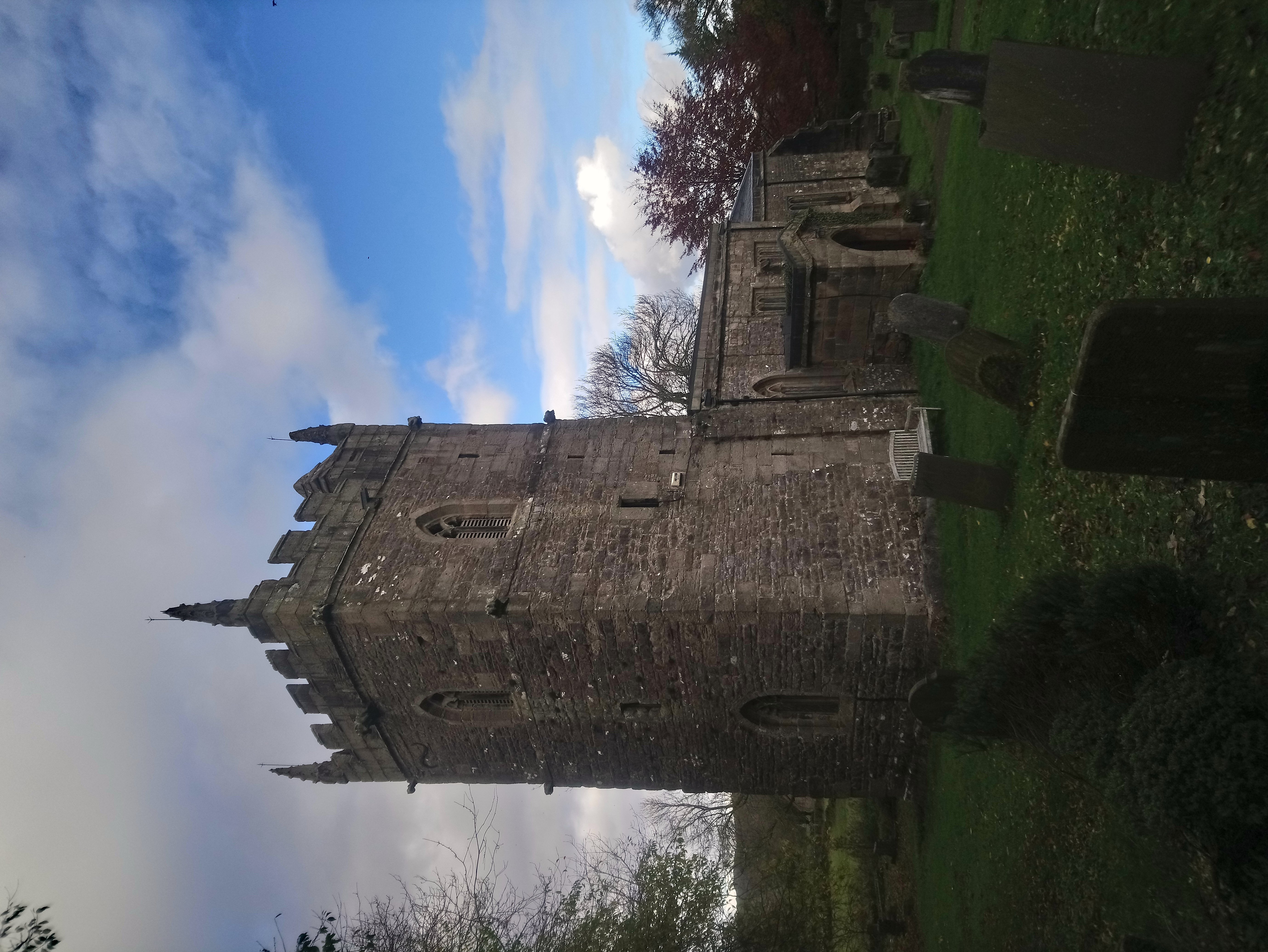|
Thomas Cromwell, 4th Baron Cromwell
Thomas Cromwell, 1st Earl of Ardglass, 11 June 1594 to 20 November 1653, was an English nobleman, son of Edward Cromwell, 3rd Baron Cromwell and his second wife Frances Rugge. Personal details Thomas Cromwell was born 11 June 1594, eldest son of Edward Cromwell, 3rd Baron Cromwell (1560-1607) and his second wife Frances Rugge (1563-1631). He had two sisters, Frances (1595-1662) and Anne (1597-1639), as well as a half sister from his father's first marriage, Elizabeth (born before 1593). Career Thomas Cromwell's father Edward escaped punishment for his role in Essex's Rebellion of 1601 but debt forced him to exchange his estates in England for lands in Ulster which had been confiscated after the end of Tyrone's Rebellion and relocate his family to the Kingdom of Ireland. Thomas succeeded as 4th Baron Cromwell in the Peerage of England after his father died in Downpatrick on 24 September 1607 and was further created 1st Viscount Lecale in the Peerage of Ireland, on 22 November 1 ... [...More Info...] [...Related Items...] OR: [Wikipedia] [Google] [Baidu] |
Tickencote
Tickencote is a small village and civil parish in the county of Rutland in the East Midlands of England. It is noted for St Peter's Church, Tickencote, St Peter's Church, with its Norman chancel arch. The population at the 2001 census was 67. At the 2011 census the population remained less than 100 and was included together with the parish of Great Casterton. Geography The parish essentially stretches along the A1 road (Great Britain), A1 (Ermine Street) from the Bloody Oakjunctionto the Casterton junction. At the far north of the parish, the Warren Plantation is on the north-east side of the A1. To the north-west is Empingham. On the southern edge of Exeter Gorse, it borders Great Casterton. The boundary with Great Casterton to the B1081 road, B1081 junction is one field's width north-east of the A1, running parallel to the carriageways, passing the eastern edge of Tickencote Warren farm. It crosses the A1 at the B1081 junction 200 metres west of the A1 bridge where it crosses th ... [...More Info...] [...Related Items...] OR: [Wikipedia] [Google] [Baidu] |
Royal Irish Army
Royal may refer to: People * Royal (name), a list of people with either the surname or given name * A member of a royal family Places United States * Royal, Arkansas, an unincorporated community * Royal, Illinois, a village * Royal, Iowa, a city * Royal, Missouri, an unincorporated community * Royal, Nebraska, a village * Royal, Franklin County, North Carolina, an unincorporated area * Royal, Utah, a ghost town * Royal, West Virginia, an unincorporated community * Royal Gorge, on the Arkansas River in Colorado * Royal Township (other) Elsewhere * Mount Royal, a hill in Montreal, Canada * Royal Canal, Dublin, Ireland * Royal National Park, New South Wales, Australia Arts, entertainment, and media * ''Royal'' (Jesse Royal album), a 2021 reggae album * ''The Royal'', a British medical drama television series * ''The Royal Magazine'', a monthly British literary magazine published between 1898 and 1939 * ''Royal'' (Indian magazine), a men's lifestyle bimonthly * Royal Te ... [...More Info...] [...Related Items...] OR: [Wikipedia] [Google] [Baidu] |
Earl Of Ardglass
The title Earl of Ardglass (pronounced "Ar-''glass''") was created in the Peerage of Ireland on 15 April 1645. The Earl held the subsidiary titles of ''Baron Cromwell'' (Peerage of England, 18 December 1540) and '' Viscount Lecale'' (Peerage of Ireland, 22 November 1624). All three titles became extinct in 1687. Barons Cromwell (1540) *Gregory Cromwell, 1st Baron Cromwell (1514–1551) *Henry Cromwell, 2nd Baron Cromwell (1538–1592) *Edward Cromwell, 3rd Baron Cromwell (1559–1607) * Thomas Cromwell, 4th Baron Cromwell (1594–1653) (created Viscount Lecale in 1624 and Earl of Ardglass in 1645) Earls of Ardglass (1645) *Thomas Cromwell, 1st Earl of Ardglass (1594–1653) *Wingfield Cromwell, 2nd Earl of Ardglass (1622–1668) *Thomas Cromwell, 3rd Earl of Ardglass (1653–1682) *Vere Essex Cromwell, 4th Earl of Ardglass Vere Essex Cromwell, 4th Earl of Ardglass PC (I), (2 October 1625 – 26 November 1687) was an English nobleman, son of Thomas Cromwell, 1st Earl of Ard ... [...More Info...] [...Related Items...] OR: [Wikipedia] [Google] [Baidu] |
Probate
Probate is the judicial process whereby a will is "proved" in a court of law and accepted as a valid public document that is the true last testament of the deceased, or whereby the estate is settled according to the laws of intestacy in the state of residence of the deceased at time of death in the absence of a legal will. The granting of probate is the first step in the legal process of administering the estate (law), estate of a deceased person, resolving all claims and distributing the deceased person's property under a will. A probate court decides the legal validity of a testator's (deceased person's) will and grants its approval, also known as granting probate, to the executor. The probated will then becomes a legal instrument that may be enforced by the executor in the law courts if necessary. A probate also officially appoints the executor (or personal representative), generally named in the will, as having legal power to dispose of the testator's assets in the manner sp ... [...More Info...] [...Related Items...] OR: [Wikipedia] [Google] [Baidu] |
Will (law)
A will or testament is a legal document that expresses a person's (testator) wishes as to how their property ( estate) is to be distributed after their death and as to which person ( executor) is to manage the property until its final distribution. For the distribution (devolution) of property not determined by a will, see inheritance and intestacy. Though it has at times been thought that a "will" historically applied only to real property while "testament" applied only to personal property (thus giving rise to the popular title of the document as "last will and testament"), the historical records show that the terms have been used interchangeably. Thus, the word "will" validly applies to both personal and real property. A will may also create a testamentary trust that is effective only after the death of the testator. History Throughout most of the world, the disposition of a dead person's estate has been a matter of social custom. According to Plutarch, the written will was ... [...More Info...] [...Related Items...] OR: [Wikipedia] [Google] [Baidu] |
Elmesthorpe
Elmesthorpe (''sometimes spelt Elmersthorpe, Elmsthorpe or Aylmersthorpe'') is a village and civil parish in the Blaby district of Leicestershire, England. It is situated to the south-east of Earl Shilton, near to Hinckley on the A47 road. In 2004, the parish had an estimated population of 520, reducing to 509 at the 2011 census. History The village's name means 'outlying farm/settlement of Æthelmaer or Ailmer'. The village has been inhabited from at least Roman times as there is evidence of Roman occupation within the parish. In 1297, Elmesthorpe was home to numerous farms and 40-50 families. The Plague and a failing economy caused the village to depopulate and finally disappear. In 1485, it is thought King Richard III and his troops stayed in the partially ruined church for shelter on their march from Leicester to the Battle of Bosworth; with the king and his officers sheltering within the church, and the soldiers camping outside. The parish church is dedicated to S ... [...More Info...] [...Related Items...] OR: [Wikipedia] [Google] [Baidu] |
Tissington
Tissington is a village in the Derbyshire Dales district of Derbyshire, England. The appropriate civil parish is called Tissington and Lea Hall. The population of this parish at the 2011 census was 159. It is part of the estate of Tissington Hall, owned by the FitzHerbert family since 1465. It is a popular tourist attraction, particularly during its well dressing week. It also gives its name to the Tissington Trail, a walk and cycle path which passes nearby. The Limestone Way, another long-distance path and bridleway, passes through the village itself. History Tissington (Old English "Tidsige's farm/settlement") is recorded in the Domesday Book of 1086 as ''Tizinctun'', having been given to Henry de FerrersHenry was given a large number of manors throughout England, but particularly in Derbyshire. by the King: "In Tizinctun Ulchel, Edric, Ganel, Uluiet, Wictric, Leuric, Godwin had 4 carucates of land for geld. Land for 4 ploughs. Now in the demesne there (are) 3 ploughs: ... [...More Info...] [...Related Items...] OR: [Wikipedia] [Google] [Baidu] |
Lord Chief Justice Of The King's Bench
Lord is an appellation for a person or deity who has authority, control, or power over others, acting as a master, chief, or ruler. The appellation can also denote certain persons who hold a title of the peerage in the United Kingdom, or are entitled to courtesy titles. The collective "Lords" can refer to a group or body of peers. Etymology According to the Oxford Dictionary of English, the etymology of the word can be traced back to the Old English word ''hlāford'' which originated from ''hlāfweard'' meaning "loaf-ward" or "bread-keeper", reflecting the Germanic tribal custom of a chieftain providing food for his followers. The appellation "lord" is primarily applied to men, while for women the appellation "lady" is used. This is no longer universal: the Lord of Mann, a title previously held by the Queen of the United Kingdom, and female Lords Mayor are examples of women who are styled as "Lord". Historical usage Feudalism Under the feudal system, "lord" had a wide ... [...More Info...] [...Related Items...] OR: [Wikipedia] [Google] [Baidu] |
Thomas Fleming (judge)
Sir Thomas Fleming (April 15447 August 1613) was an English judge and politician who sat in the House of Commons at various times between 1581 and 1611. He was judge in the trial of Guy Fawkes following the Gunpowder Plot. He held several important offices, including Lord Chief Justice, Lord Chief Baron of the Exchequer and Solicitor General for England and Wales. Early life Fleming was the son of John Fleming, a general trader and mercer of Newport on the Isle of Wight, and his wife Dorothy Harris. The family lived in a house just to the east of the entrance to the corn market from the High Street in Newport. The Fleming family line had strong historical connections to the Isle of Wight, with several mentions of the name cropping up in previous historical documents and books. He went to school in Godshill and studied law at Lincoln's Inn where he was called to the bar in 1574. Career In 1581, Fleming was elected Member of Parliament for Kingston upon Hull after the existing m ... [...More Info...] [...Related Items...] OR: [Wikipedia] [Google] [Baidu] |
Blore
Blore () is a small village and parish in the Staffordshire Moorlands District of England. It is on an acclivity above Dovedale, three and a half miles north west of Ashbourne, including the hamlet of Swinscoe, one mile (1.6 km) to the south and a part of the parochial chapelry of Calton. The ecclesiastical parish is Blore Ray with Okeover and the civil parish is Blore-with-Swinscoe, both with slightly different boundaries. Blore parish, exclusive of the portion of Calton, contains about and 273 souls. Swinscoe contains about . The Bassett tomb (Erected between 1618 and 1640) The village of Blore comprises Blore Hall (now owned by the Holiday Property Bond), St Bartholomew's parish church, the Old Rectory, a few other houses and several farms. The hall was first mentioned in 1331, though only one building remains substantially unaltered since 1661. The Holiday Property Bond is a life assurance bond investment in securities and assets. Its 35,000 Bondholders have excl ... [...More Info...] [...Related Items...] OR: [Wikipedia] [Google] [Baidu] |
Throwley Old Hall
Throwley Old Hall is a ruined stately home near the village of Calton and adjacent to the River Manifold, in north-east Staffordshire, England. It is a Grade II* listed building and a scheduled monument. The estate is privately owned."The hall and its history" Throwley Hall Farm. Retrieved 6 June 2019. The house is aligned north-east/south-west; it has two storeys, with a square tower, of three storeys, attached to the north-east corner. S. C. Hall, writing in the mid-19th century, described the house when it was intact: "It is built of the limestone of the neighbourhood, quoined with larger gritstones; and its walls bear a very time-worn appearance. On the Eastern side, its gables, large bayed window of many lights ... [...More Info...] [...Related Items...] OR: [Wikipedia] [Google] [Baidu] |
Ilam, Staffordshire
Ilam () is a village in the Staffordshire Peak District of England, lying on the River Manifold. The population of the civil parish as taken at the 2011 census was 402. Ilam village Ilam is best known as the location of the neo-Gothic Ilam Hall, a stately home built in the 1820s, partly demolished in the 1930s. It is now a youth hostel owned by the National Trust. It is set in large parklands that are open to visitors and is a Grade II* listed property, as ''Ilam Hall and Gardeners Cottage''. Many of the cottages are in a style that reminds visitors of a picturesque Swiss village, with "Swiss chalet" style houses and matching school house. This concept was started in the 1800s by Jesse Watts-Russell, who inherited a fortune on the death of his father, a wealthy soap manufacturer. He built the current Ilam Hall and his family resided there for decades. http://www.lostheritage.org.uk/houses/lh_staffordshire_ilamhall.html ILAM HALL Ilam is about 4 miles from Ashbourne at th ... [...More Info...] [...Related Items...] OR: [Wikipedia] [Google] [Baidu] |









